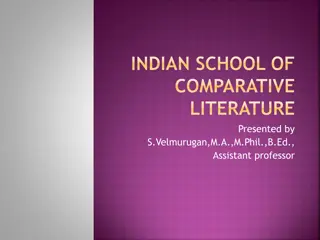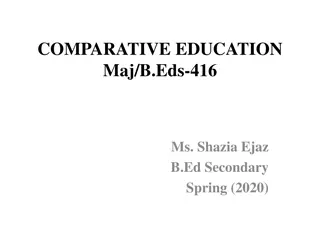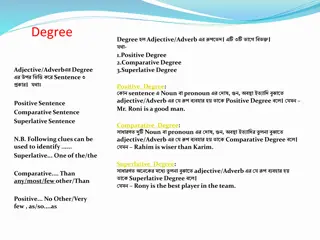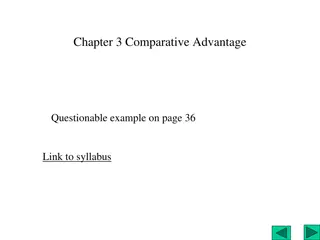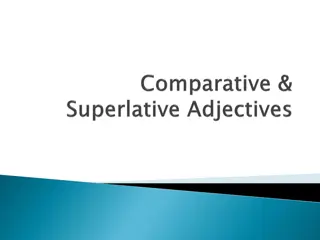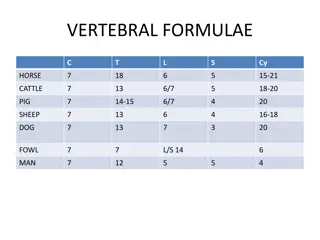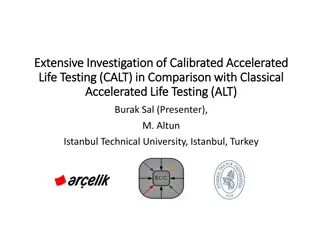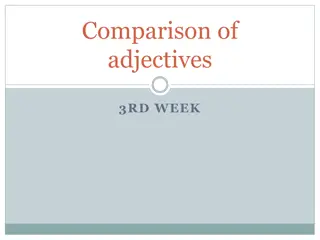Comparative Studies on Metacarpals of Ox
This study examines the metacarpal bones of ox, focusing on the large metacarpal and the lateral small metacarpal. The large metacarpal consists of a shaft with distinct surfaces and borders, while the proximal and distal extremities have specific features for articulation and ligament attachment. The lateral small metacarpal, or fifth metacarpal, is a shorter bone attached to the large metacarpal. Detailed descriptions and images provide insights into the anatomy of these metacarpal bones.
Download Presentation

Please find below an Image/Link to download the presentation.
The content on the website is provided AS IS for your information and personal use only. It may not be sold, licensed, or shared on other websites without obtaining consent from the author.If you encounter any issues during the download, it is possible that the publisher has removed the file from their server.
You are allowed to download the files provided on this website for personal or commercial use, subject to the condition that they are used lawfully. All files are the property of their respective owners.
The content on the website is provided AS IS for your information and personal use only. It may not be sold, licensed, or shared on other websites without obtaining consent from the author.
E N D
Presentation Transcript
VAN-601 UNIT-II COMPARATIVE STUDIES ON METACARPALS OF OX By: Dr Manoj Kumar Singh Assistant Professor Department of Veterinary Anatomy
OX In general there are five metacarpal bones, numbered I to V from medial to lateral. In ox metacarpus consists of a large metacarpal (third and fourth fused) , which carries the digit and a lateral small metacarpal LARGE METACARPAL It is placed vertically between the carpus above and fetlock or first phalanx below. This is also sometimes referred as cannon bone . It consists of a shaft and two extremities.
SHAFT It is semi-cylindrical and as two surfaces and two borders . The dorsal surface is convex transversely and is marked by a vertical vascular longitudinal groove and provided with a foramina at either ends, which traverses the thickness of the shaft. The volar surface is flat from side to side and presents a shallow vertical groove, which communicates with the anterior groove through the foramina described above. This surface is in contact with the superior sesamoidean ligament. The borders are medial and laterals. The latter, at its upper part has the lateral small metacarpal attached to it posteriorly.
Proximal extremity It has two facets separated by a ridge in front and a notch behind. The medial facet is larger and corresponds to the second and third carpal and lateral to the fourth carpal. On the antero - medial aspect of this extremity is the metacarpal tuberosity for the extensor carpi radialis. At the postero-medial aspect is a tubercle for the attachment of extensor carpi obliquus. The lateral aspect of the volar face bears a small facet for the lateral small metacarpal.
DISTAL EXTREMITY It is divided into two parts by a sagittal cleft. Each part is made of two condyles separated by a sagittal ridge for articulation with the first phalanx below, just above the condyles there are four depressions for accommodation of concerned sesamoids of the proximal row behind. The medial condyle is slightly larger than the lateral. The abaxial aspects of each division are depressed for ligamentous attachment.
LATERAL SMALL METACARPAL (fifth metacarpal) It is an aborted long bone and is an inch and a half long. The bone is attached to the postero-lateral aspect of the proximal extremity of the large metacarpal. The proximal extremity is rounded and bears a small facet on the anterior face for the large metacarpal. The distal extremity is pointed.
HORSE The metacarpus consists of one large metacarpal (third) two small metacarpals or splints (second and fourth). LARGE METACARAPAL The vascular grooves on the dorsal and volar faces are absent. The volar face is roughened on either side in its proximal two thirds for attachment of the splints with which it forms a wide groove for the lodgment of suspensory ligament.
It fourth carpals above and by means of small facets on either side, with the proximal extremities of the splints. articulates with the second, third and The resembles one of the parts of the distal extremity of large metacarpal of the ox. distal extremity of the large metacarpal The medial condyle of the articular area for the first phalanx is slightly larger than that of the lateral.
SMALL METACARPALS The shaft of each is three sided. The dorsal face is rough for attachment to the large metacarpal. The proximal extremity is relatively massive and has one or two facets dorso-laterally for the large metacarpal. The medial bone bears two facets above for the second and the third carpals while the lateral presents one facet for the fourth. The distal extremity is in the form of a small nodule and usually forms the button of the splint.
PIG Has four bones. The first is absent. Third and fourth metacarpals are large and carry the chief digits. The second and fifth are much smaller and bear the accessory digits.
DOG Has five bones. The first is the shortest. The third and the fourth are longest. The second is longer than the fifth. The lie close together above but diverges distally. The proximal ends articulate with each other and the first four with the corresponding carpals. The fifth also articulates with the fourth carpal.
FOWL There are three metacarpal bones fused with the distal row of carpal bones and form an irregular D shaped structure known as carpometacarpus

 undefined
undefined








